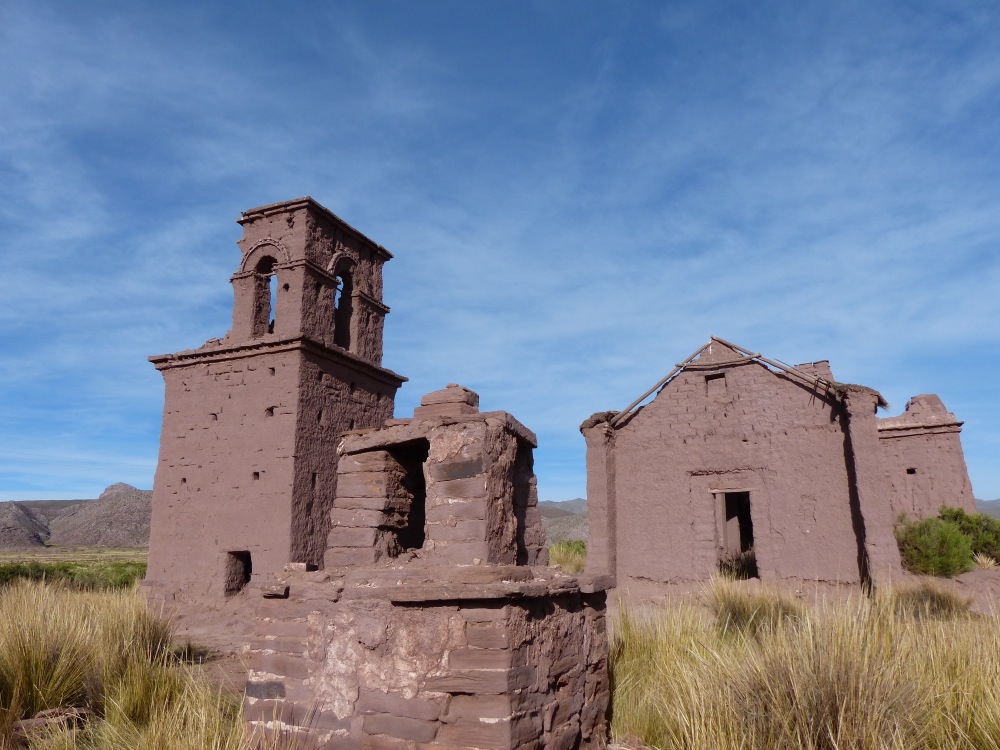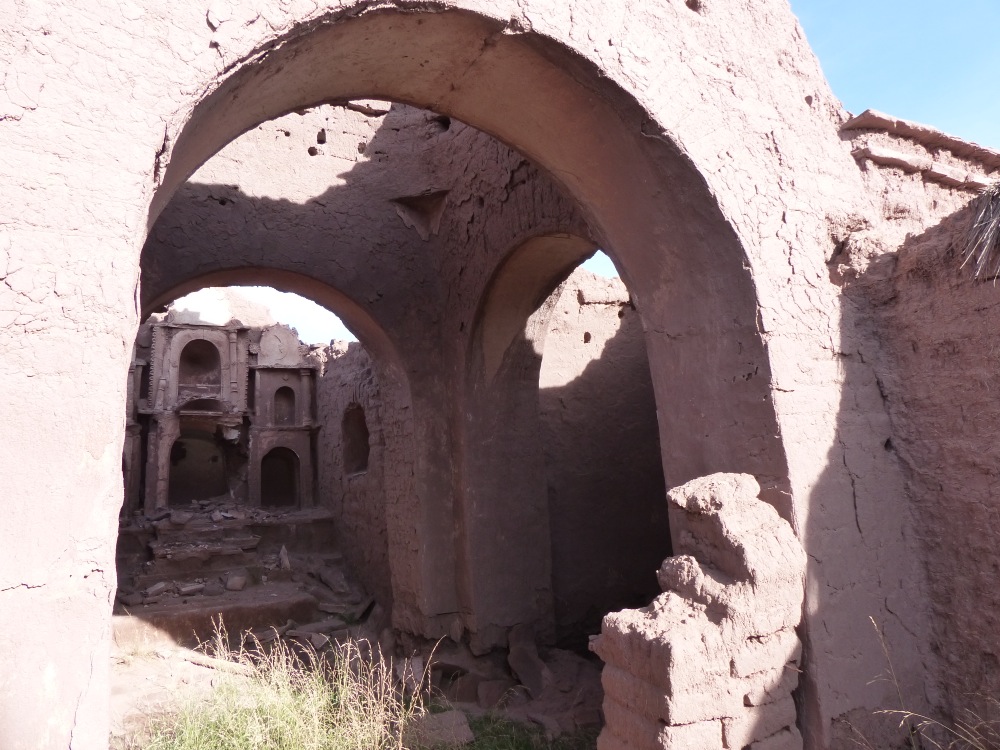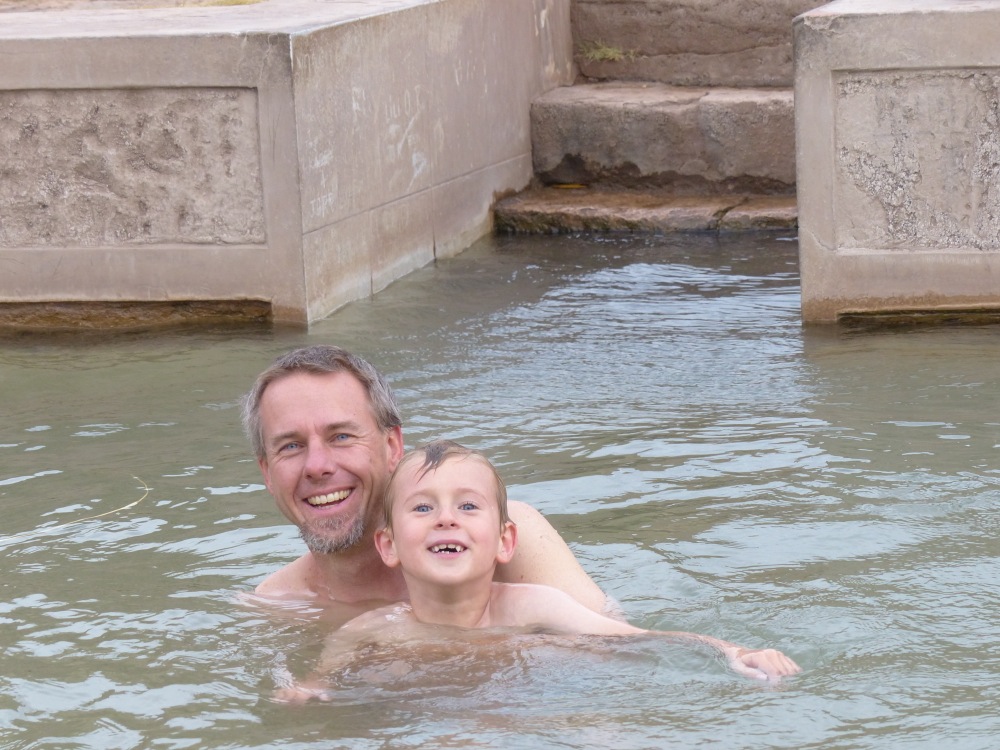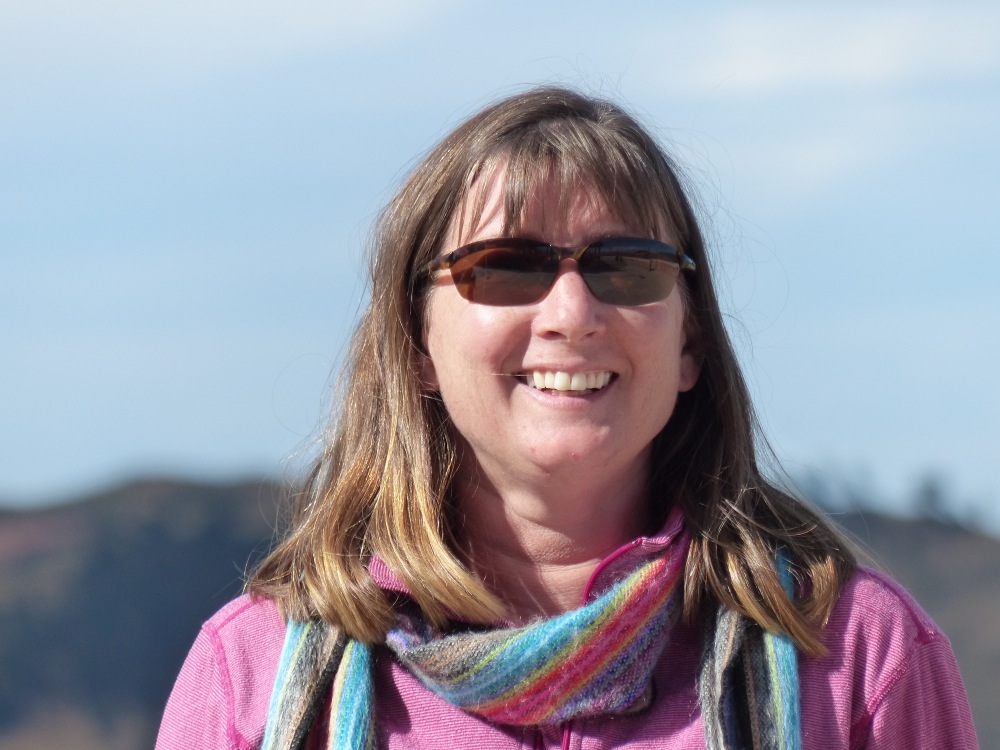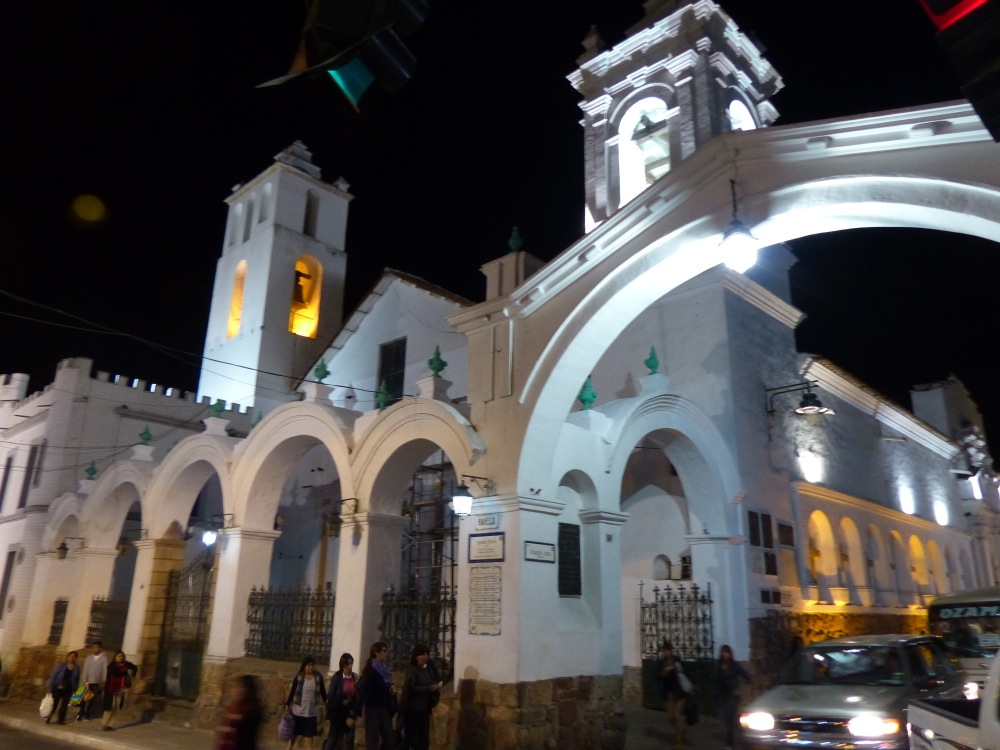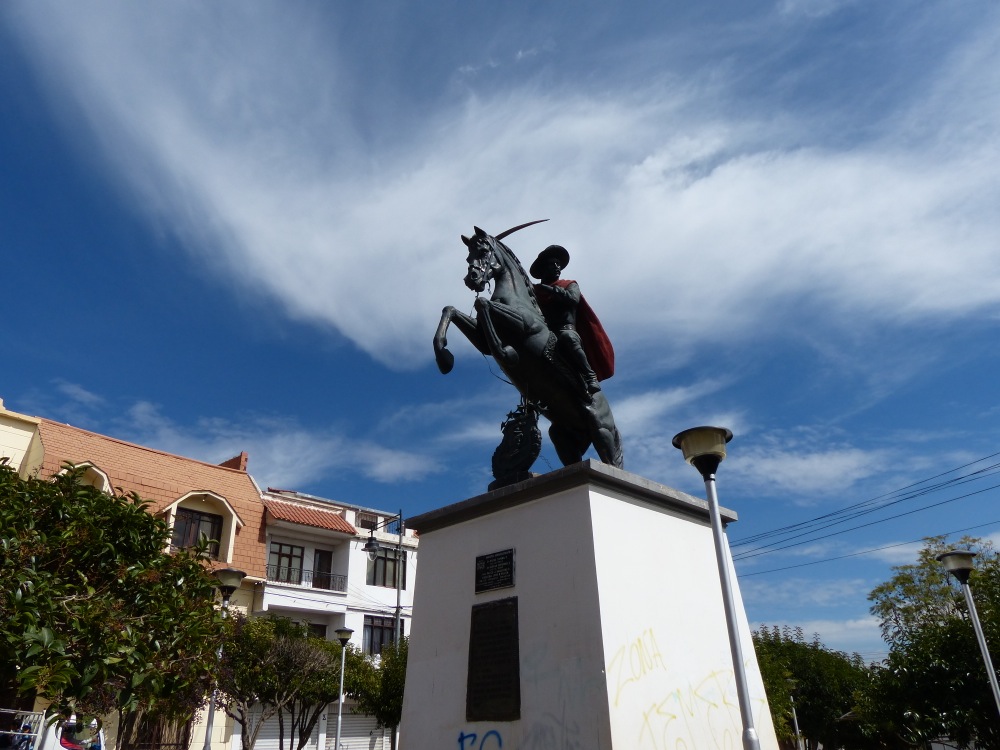After crossing the border into Bolivia, our next stop was to be the city of Sucre where we intended to stay and work.
We had a choice of routes and weren’t sure which was better, and in the end followed the main road to La Paz as far as we could before turning off toward Sucre. The road was mostly dirt after that, but they’re in the process of paving it and most of it was pretty fast and we enjoyed the scenery.
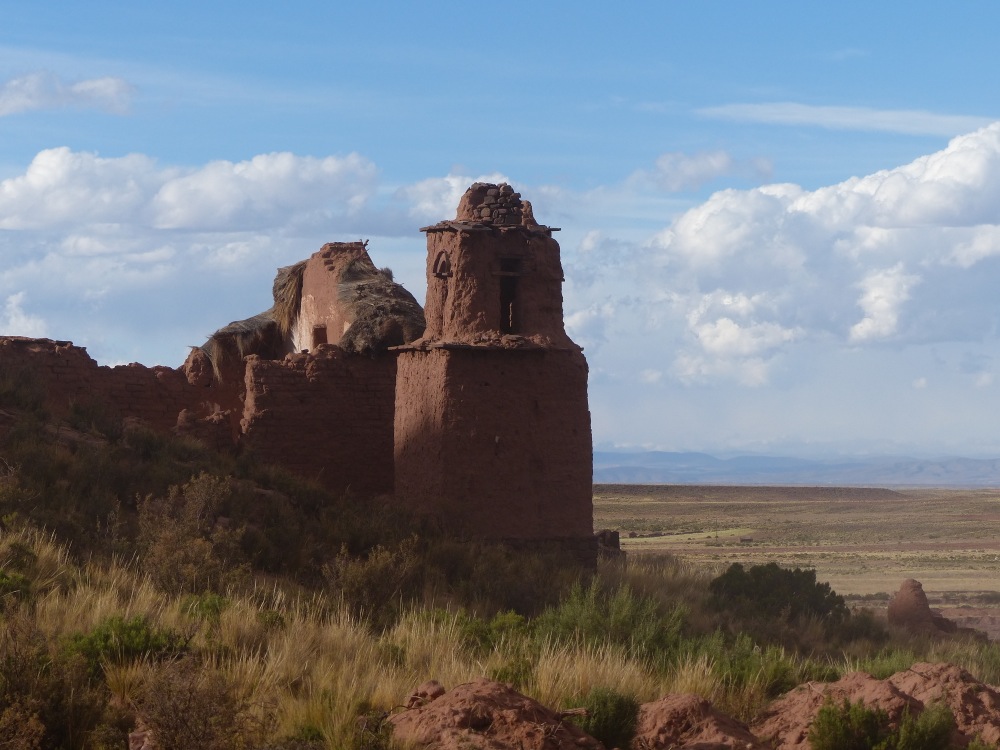
We saw many ruins of small churches along the way. They tended to be set by themselves in the countryside rather than being in a village. They were strangely captivating.
Our first night in Bolivia was spent in a bush camp along a side road. There weren’t many people about, but those that were looked at our van with great curiosity.
The next day we passed through the dusty town of Oruro where we re-fueled. That night we made it to some thermal baths we had read about. Quinn and I enjoyed a swim in the warm waters.
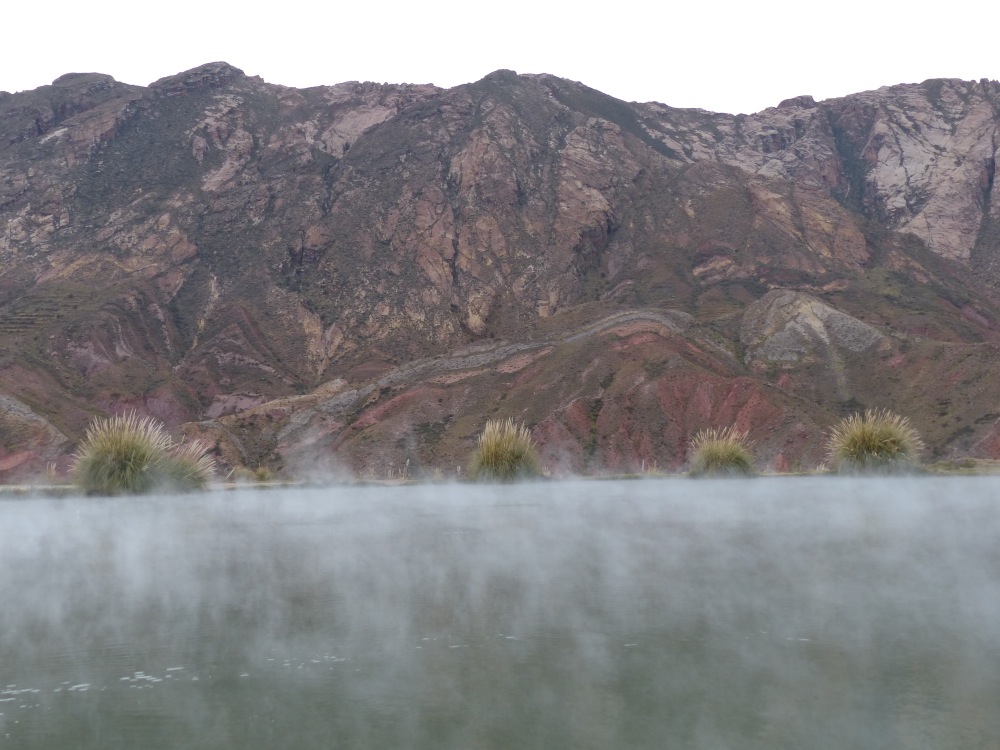
There was a whole lake that was warmed by the hot springs and in the morning the steam rose off the water into the chilly air.
The next morning we drove to the town of Potosi, the site of a huge silver mine. We wanted to visit a silver museum and mint in the town, but when we tried to get into the only parking lot we could find, we were told that the man with the key was still asleep. At least he wasn’t dead.
With no place to park, and since we have to come back through Potosi on our way to the Salar de Uyuni, we decided to head to Sucre. When we arrived, we found a great campsite, but poor internet connections. With winter coming and temperatures in the Salar dropping with each passing week, we decided to only stay two weeks, and to live in the van instead of renting an apartment for a month.
We were happy we did, as we got to meet lots of other travelers there.
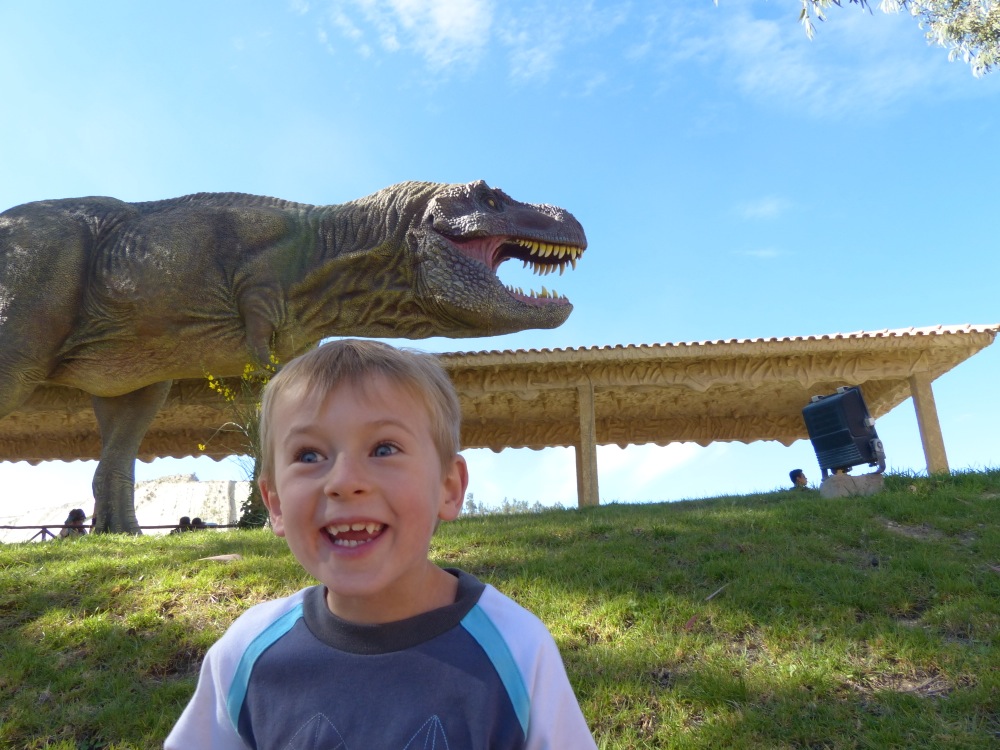
Our first sightseeing trip was to a local dinosaur park. It was really well done and Quinn had a great time.
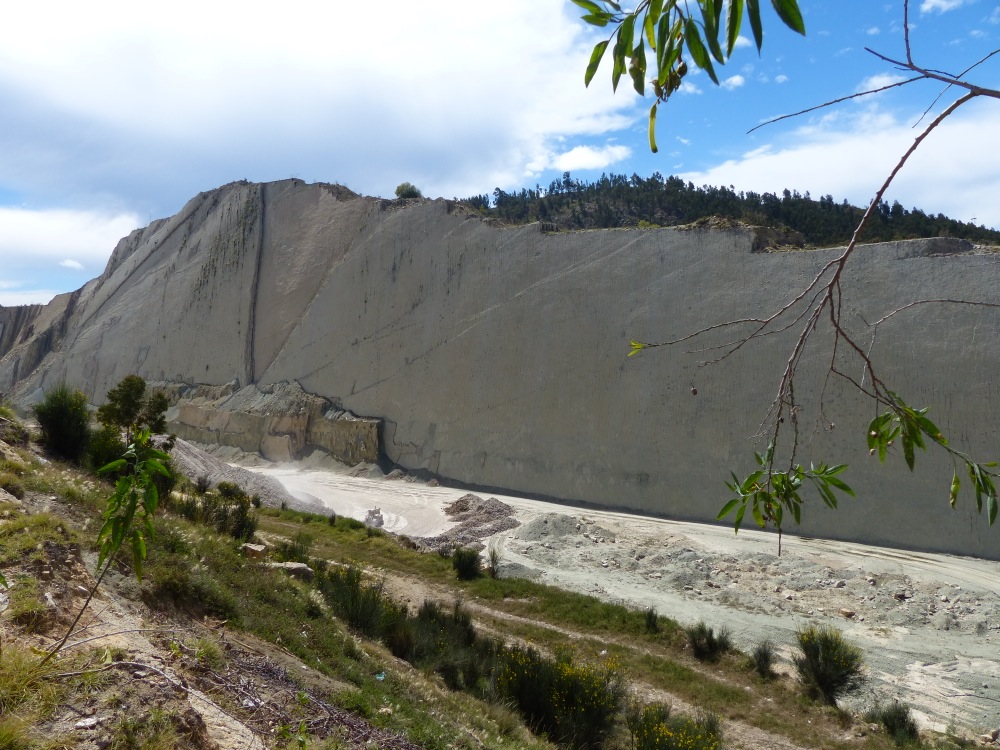
The park was conceived when a local cement factory was digging for raw materials and uncovered this sheer rock face covered in dinosaur footprints.
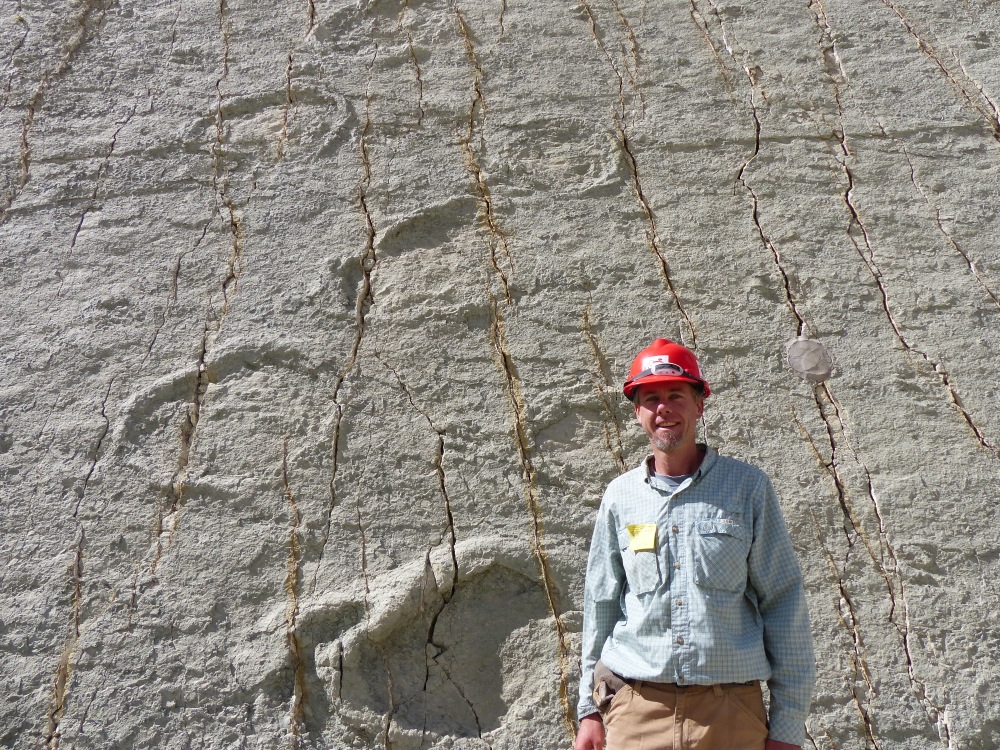
10,000 footprints have been cataloged, making this the largest dinosaur footprint site in the world.

This is the rock face where the footprints are. Imagine this as a mud plain 70 million years ago with dinosaurs walking across it. Then through geological movements it was crushed into a V shape. There’s no telling how far down it goes, and the other half exists somewhere nearby.
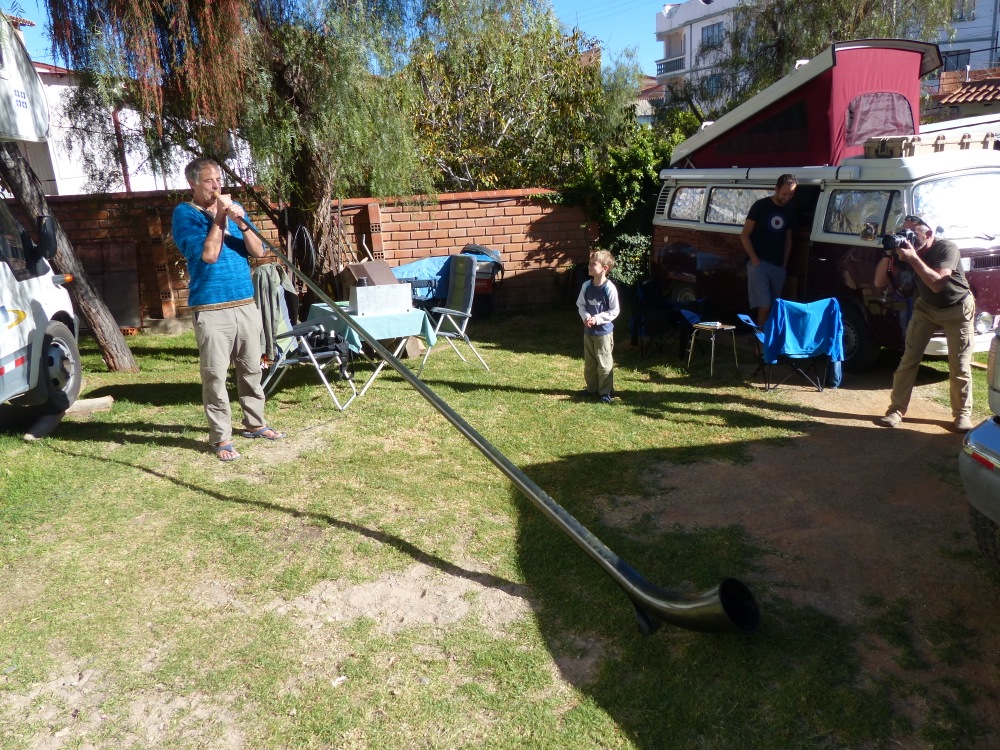
A Swiss visitor to the campsite brought out his alpenhorn and played a little for us. Yes, he kept an alpenhorn in his camper.

Another Swiss family arrived a few days later. Quinn had a great few days playing with their daughters.


